Discover some of the huge dinosaurs that lived 200-145 million years ago in what is now Britain.
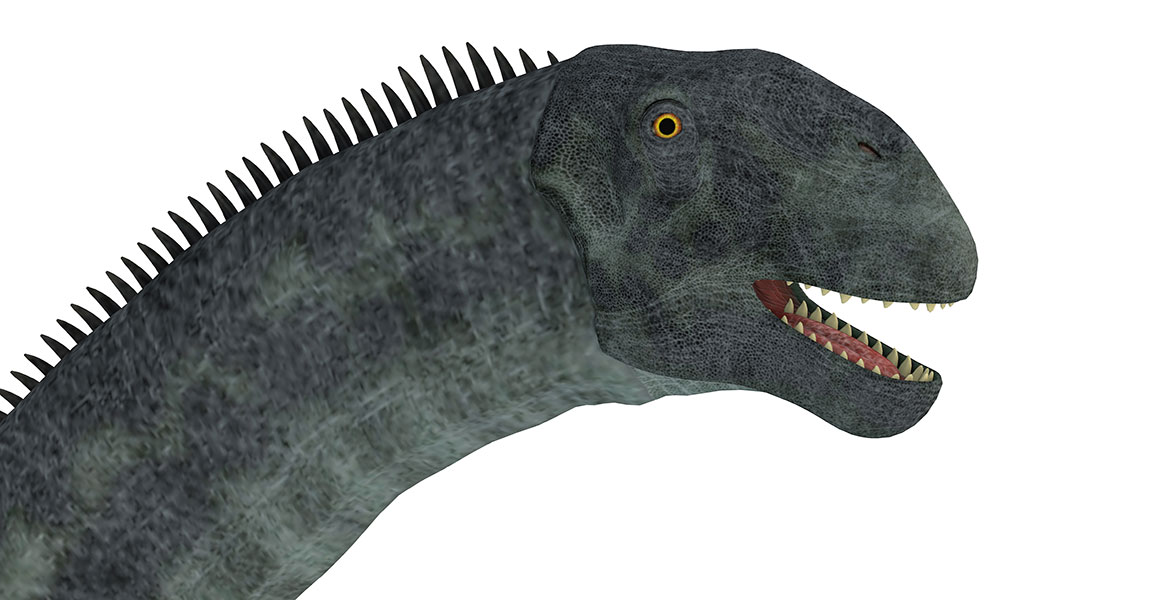
© Catmando/Shutterstock.com
When Dippy went on a UK tour, crowds outside London were able to experience this dinosaur's spectacular size up close for the first time.
At more than four metres tall, Dippy towered over the heads of visitors. But that's nothing compared to how long Dippy is.
Dippy measures 26 metres from head to tail. It is an exact copy - called a cast - of Diplodocus fossil bones found in Wyoming, USA.
Diplodocus lived 155-145 million years ago in the Jurassic Period.
Although this dinosaur lived in the USA, Britain has lots of fascinating prehistoric animals from that period of time, too. And many also reached impressive sizes.
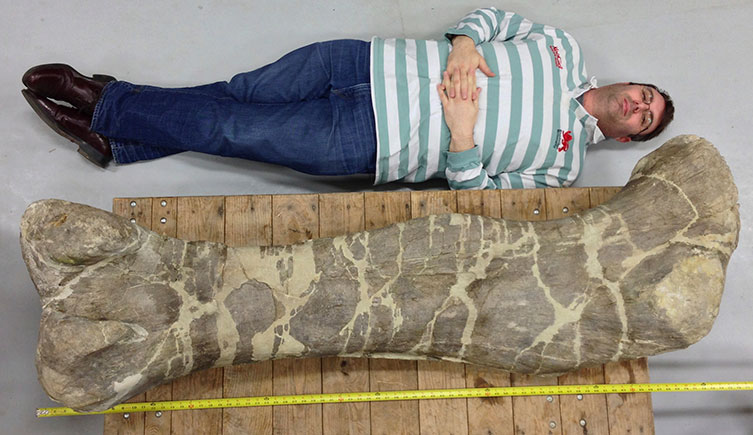
Museum scientist Paul Barrett lying down next to a really big sauropod dinosaur bone
What was Britain's biggest Jurassic dinosaur?
Diplodocus was a sauropod, a group of dinosaurs that includes the largest animals ever to have lived on land.
These four-legged plant-eaters had long necks and tails. Their heads were tiny compared to their massive bodies.
The two most complete sauropod skeletons dug up in the UK belong to Cetiosaurus and Cetiosauriscus.
These dinosaurs were ginormous. Scientists think that Cetiosaurus was probably the largest, but both were nearly as long as two double-decker buses.
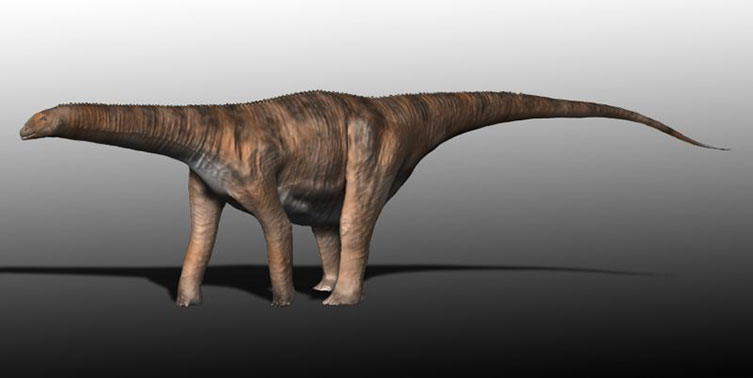
What Cetiosaurus may have looked like. Scientists think this dinosaur grew to about 16 metres long. © Nobu Tamuraopens in a new window, licenced under CC BY 3.0opens in a new window, via Wikimedia Commonsopens in a new window
How do scientists work out how big dinosaurs were?
Prof Paul Barrett, dinosaur researcher at the Museum, says:
'It's very unusual to find a complete dinosaur skeleton. In fact, for most dinosaurs we only have fragments such as limbs, teeth and bits of backbone.
'This makes it very tricky to work out exactly what size dinosaurs were or how much they weighed.
'Our best chance of finding out is if we find a thigh bone. By measuring its circumference - the distance around the bone - as well as its length, we can estimate the dinosaur's weight.
'And if we find a lot of the dinosaur's backbone, this gives us a good clue about how long the dinosaur was.'
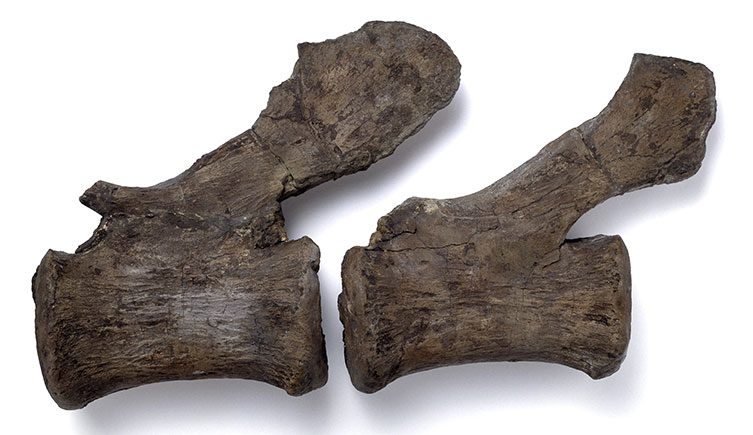
Two tail bones from Cetiosauriscus. They measure 26cm across, about the size of a dinner plate.
The Dorset giant
One British sauropod is known from a single limb bone measuring 135 centimetres in length - bigger than most seven-year-olds.
It was found in Dorset in the 1870s, nearly 150 years ago.
Early dinosaur scientists thought the bone was from Cetiosaurus. This mistake was only corrected in 2010 when Paul studied the bone and realised it was from a new species.
He named it Duriatitan, which means 'Dorset giant'. It is another contender for Britain's biggest Jurassic dinosaur.

So far, this fossil bone is the only part of Duriatitan that scientists have found
Why did sauropods grow so big?
There are a few different ideas about this, says Paul.
'It may have provided protection against large predators such as Megalosaurus, itself around six to nine metres long.'
This big carnivore stalked the shores of southern England 168-166 million years ago, back when Britain was a series of small tropical islands, like the Bahamas are today.
Paul explains, 'While some sauropods had long whip-like tails that could lash an attacker, or some body armour, most did not. Being larger would have been a good defence against a fatal attack.'
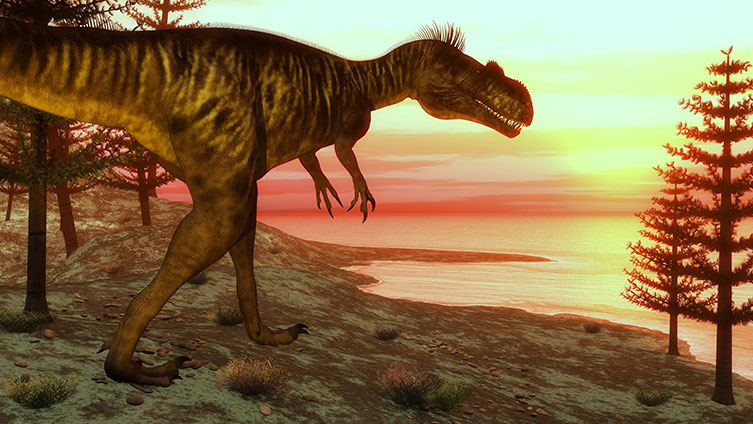
Being big probably helped sauropod dinosaurs escape deadly attacks from predators such as Megalosaurus © Elenarts/Shutterstock.com
Avoiding a food fight
'My favourite explanation for why these dinosaurs were so big is to do with food,' says Paul.
'The long necks and gigantic bodies of sauropods would have helped them reach leaves at the top of trees, which would have been out of the reach of smaller dinosaurs. So they weren't competing for dinner.
'These leaves were tough though, and difficult to digest. Sauropods had enormous guts in their barrel-shaped bodies, which helped to break the leaves down over several days.
'Small animals need to eat often to get energy. Larger animals can survive longer without eating - long enough to digest those tough leaves.'
Did you know?
Until the early 1900s many scientists thought sauropods lived partly in water.
The scientists thought these dinosaurs were too big to live on land.
It turns out the opposite is true - their air-filled bones and small feet would not have been suited to a life in water.
Experiments show they would have floated and been unstable. Or their feet would have sunk into the mud, making it difficult to walk.
Get outside and see…
...footprints made by Dippy’s sauropod relatives at Keates Quarry in Dorsetopens in a new window.
Visit the UK Fossils Networkopens in a new window to find other places you could see dinosaur footprints.
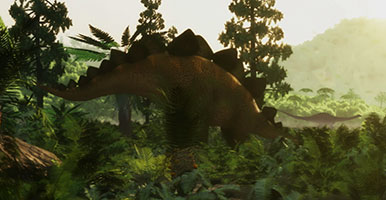
Discover dinosaurs
Find out what Museum scientists are revealing about how dinosaurs looked, lived and behaved.
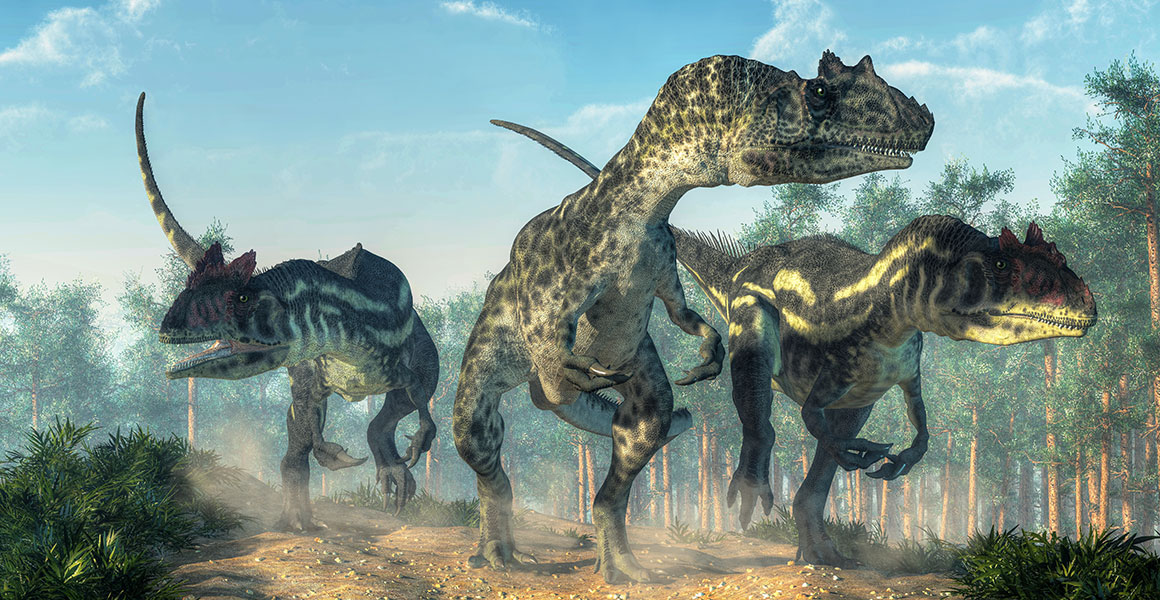
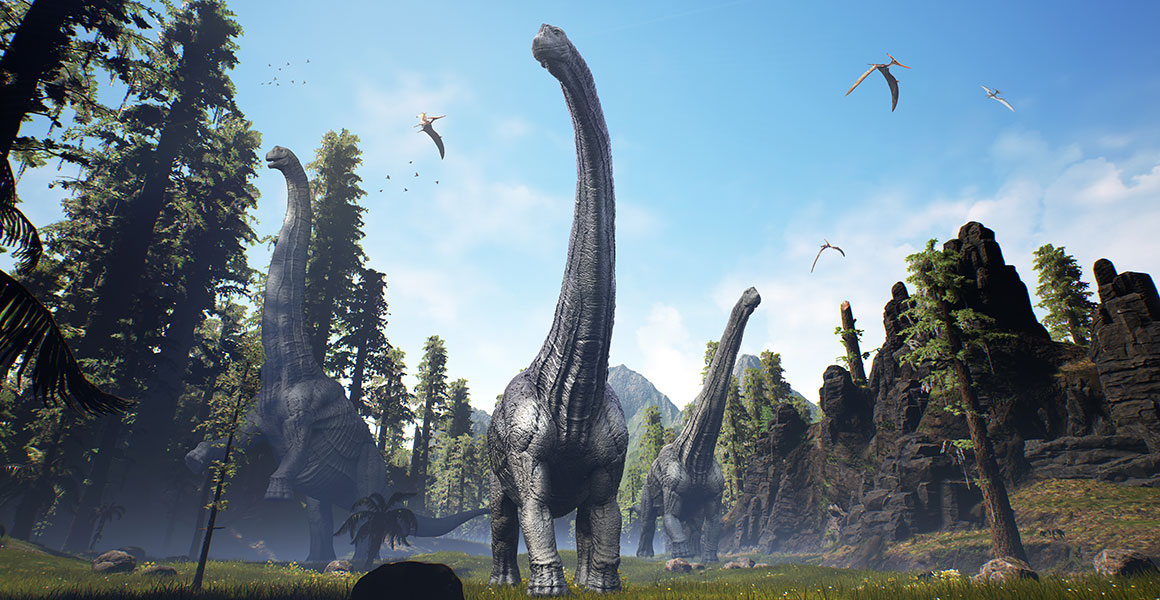
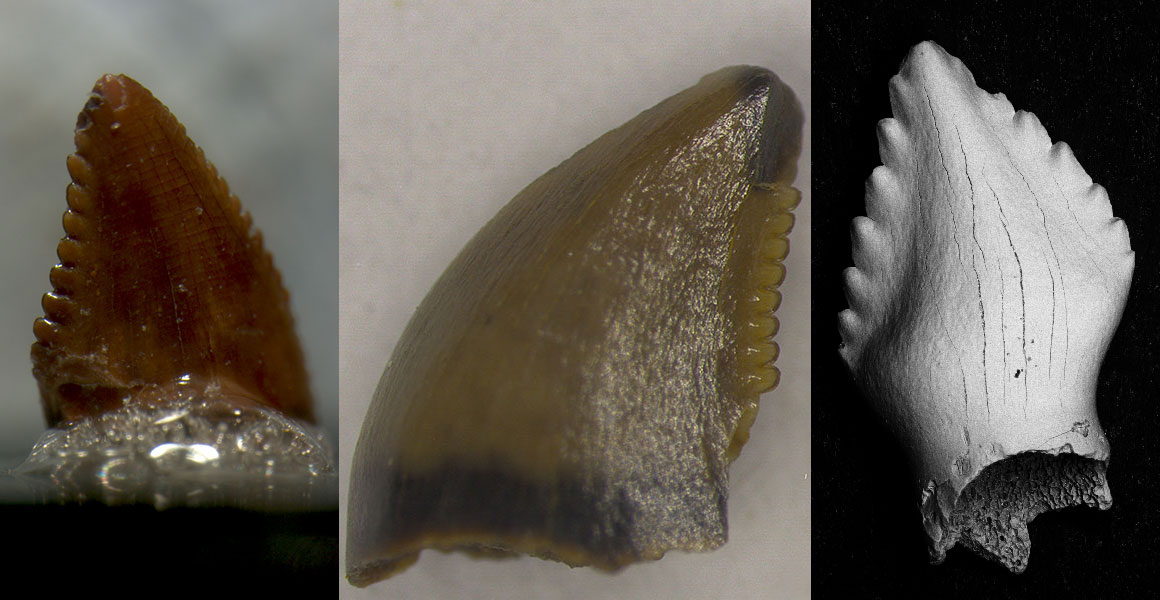
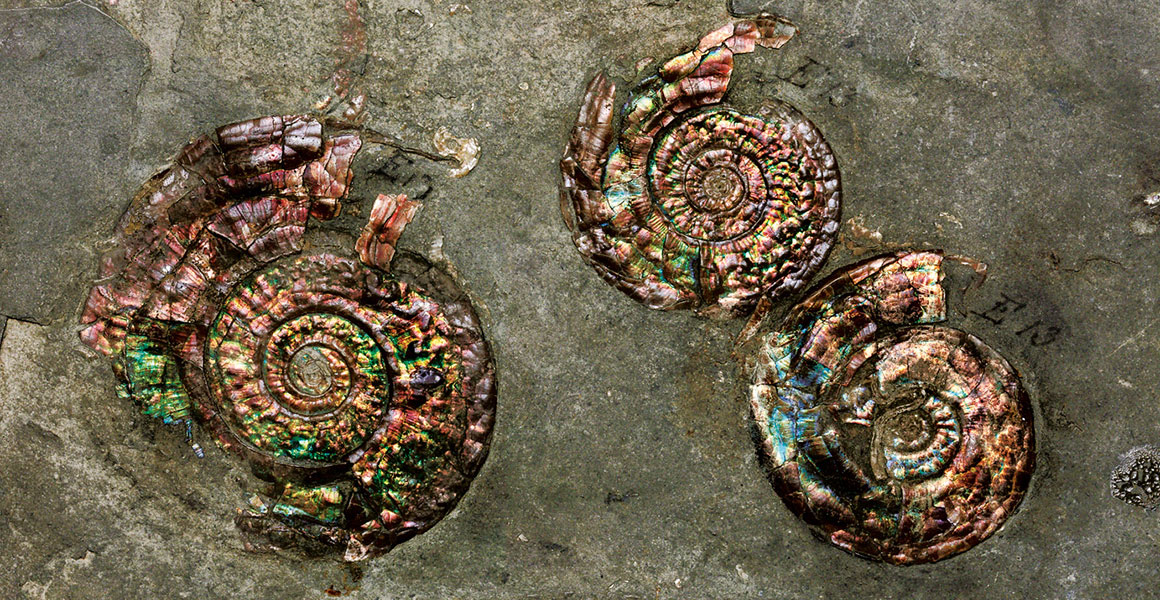
Don't miss a thing
Receive email updates about our news, science, exhibitions, events, products, services and fundraising activities. We may occasionally include third-party content from our corporate partners and other museums. We will not share your personal details with these third parties. You must be over the age of 13. Privacy notice.
Follow us on social media